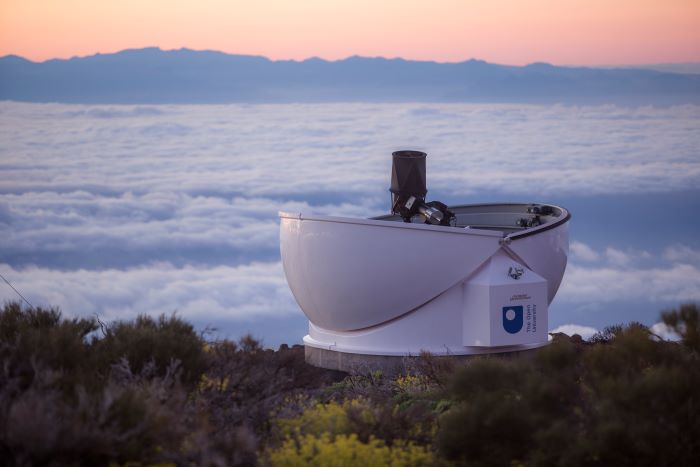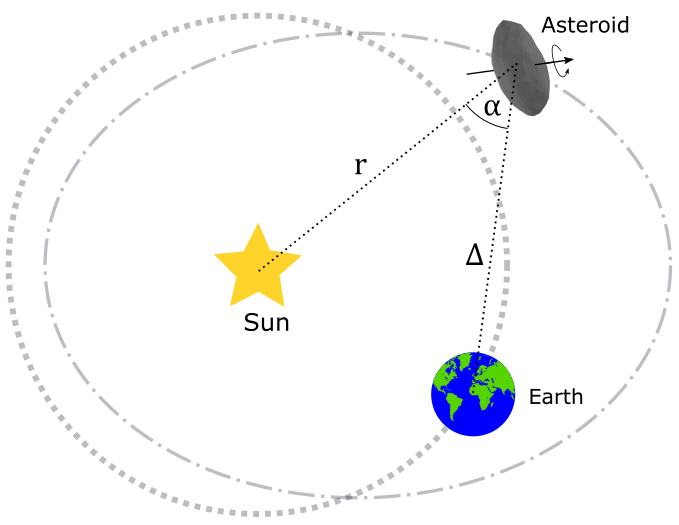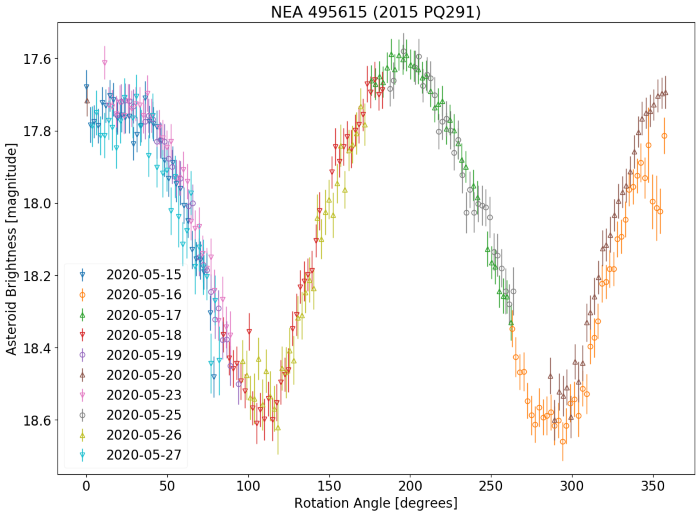At the Open University we are looking at asteroids with the OpenScience Observatories to study their rotation and surface. To understand the conditions present in the early solar system, we must study the remnants of its formation. By studying the dynamical and physical properties of the asteroidal bodies we see today, we can trace back their evolution to better understand the formation of our solar system.
 Figure 1 - The PIRATE observatory, Observatorio del Teide. In the background the island of Gran Canaria can be seen rising above the cloud layer.
Figure 1 - The PIRATE observatory, Observatorio del Teide. In the background the island of Gran Canaria can be seen rising above the cloud layer.
The OpenScience Observatories, which is the astronomy wing of the award-winning OpenSTEM Labs initiative, boasts two autonomous robotic telescopes located at the Observatorio del Teide, Tenerife. The first telescope is the PIRATE (Physics Innovations Robotic Astronomical Telescope Explorer), consisting of a 17-inch PlaneWave CDK telescope in a 4.5 m Baader Planetarium All-Sky dome. The second is the COAST (COmpletely Autonomous Survey Telescope), consisting of a 14-inch Celestron Schmidt-Cassegrain telescope, housed in a 3.5 m Baader Planetarium All-Sky dome. The telescopes run automatically each night using the observatory control software Abot from Sybilla Technologies, and are able to track asteroids as they move across the sky each night. Since the publication of this article, the observatories have undergone a significant upgrade. For an up-to-date list of technical details, please visit our specifications page here.
Using these telescopes, we study the properties and compositions of asteroid surfaces to characterise them individually as well as looking at them as whole populations. Surface properties such as composition, grain size, cratering fraction, etc. affect the way that a surface reflects light. Therefore, we can infer information about these properties from brightness measurements over a range of viewing geometries. By observing how the brightness of an asteroid varies with phase angle (defined as the Sun-Target-Observer interior angle, – see Figure 2), we may place constraints on some of these properties.
 Figure 2 - Illustration of the definition of the 'phase angle' of asteroids. It is defined as the angle between the lines drawn from the Sun to the Asteroid and from the Asteroid to the Earth. r and the triangle correspond to the distance to the Sun and Earth from the asteroid respectively
Figure 2 - Illustration of the definition of the 'phase angle' of asteroids. It is defined as the angle between the lines drawn from the Sun to the Asteroid and from the Asteroid to the Earth. r and the triangle correspond to the distance to the Sun and Earth from the asteroid respectively
To study brightness variations of asteroids, we make use of a technique called relative aperture photometry to obtain lightcurves (measurements of brightness over time). As the asteroid rotates, a different surface area reflects light from the Sun back towards Earth, with a higher reflecting area leading to an increase in observed brightness from Earth and vice versa. These lightcurves will therefore provide information about the rotation period of the asteroid. This generally will give a periodic sinusoidal shape which can then be used to determine the rotation rate of the asteroid. These lightcurves are then calibrated to an accepted standard brightness system so that measurements taken over different nights can be compared.
Once enough observations have been collected for an object, the measurements can be "rotationally averaged" (i.e. we remove the rotational brightness variations each night) to obtain the average brightness of the object on each night. This allows us to plot this average brightness (corrected for changing distance of the asteroid from the Sun and Earth) against phase angle to construct a “phase curve”. Using different models of the response of an asteroid surface to incoming light, we may infer properties about the surface by finding the parameters of the model that best fit our observations. With these observations, we hope to be able to characterise the surface properties of as many asteroids as possible with PIRATE (contributing to, and increasing, the relatively small list of asteroids with well-constrained surface properties), and to look for any cross-correlations in surface property constraints between different types of observations (such as radar and thermal-IR measurements).
 Figure 3 - Brightness of Near-Earth Asteroid 495615 (2015 PQ291) as a function of rotation angle, derived from observations taken by PIRATE in May 2020. Lower numbers on the y-axis correspond to an increase in brightness in the magnitude scale.
Figure 3 - Brightness of Near-Earth Asteroid 495615 (2015 PQ291) as a function of rotation angle, derived from observations taken by PIRATE in May 2020. Lower numbers on the y-axis correspond to an increase in brightness in the magnitude scale.
To celebrate Asteroid Day 2020 (30th June 2020), PIRATE will be (weather permitting) tasked with observing Near-Earth Asteroids 8014 (1990 MF) and 19764 (2000 NF5), with the objects approximately 15 & 75 million kilometres away from Earth respectively.
 Explore more articles in this collection by clicking on the banner above
Explore more articles in this collection by clicking on the banner above


Rate and Review
Rate this article
Review this article
Log into OpenLearn to leave reviews and join in the conversation.
Article reviews